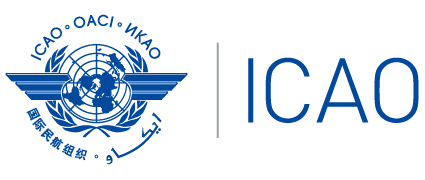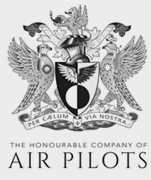A320, Heraklion Greece, 2021
A320, Heraklion Greece, 2021
Summary
On 10 July 2021, an Airbus A320 rejected takeoff from Heraklion after rotation and although the nose landing gear was allowed to drop heavily, this was not reported by the crew. All wheels were replaced and after released to service, the same crew positioned the aircraft to Dusseldorf and a new crew took over for a round trip to Kavala. After departing Kavala, the landing gear could not be retracted and a L/G SHOCK ABSORBER FAULT was annunciated. A MAYDAY return to land followed and severe structural damage caused by a fully deflated nose shock absorber was then found.
Flight Details
Aircraft
Operator
Type of Flight
Public Transport (Passenger)
Flight Origin
Intended Destination
Take-off Commenced
Yes
Flight Airborne
Yes
Flight Completed
No
Phase of Flight
Take Off
General
Tag(s)
Unplanned PF Change less than 1000ft agl,
CVR overwritten
HF
Tag(s)
Maintenance Visual Inspection,
Procedural non compliance
RE
Tag(s)
Directional Control,
High Speed RTO (V above 80 but not above V1)
EPR
Tag(s)
MAYDAY declaration
AW
Contributor(s)
Dispatch of Unserviceable Aircraft
Outcome
Damage or injury
Yes
Aircraft damage
Major
Non-aircraft damage
No
Non-occupant Casualties
No
Off Airport Landing
No
Ditching
No
Causal Factor Group(s)
Group(s)
Aircraft Operation
Safety Recommendation(s)
Group(s)
Aircraft Operation
Investigation Type
Type
Independent
Description
On 10 July 2021, Airbus A320 (D-AICP) being operated by Condor on a scheduled international passenger flight from Heraklion to Dusseldorf made a successful high speed rejected takeoff commenced after rotation after an inappropriate rudder input was assessed as having created a runway veer off risk. The next day, the same flight crew flew the aircraft empty to Dusseldorf where a new crew were to use it to operate Dusseldorf - Kavala - Dusseldorf. The outbound flight was uneventful but after departing Kavala, the landing gear could not be retracted and an ECAM indication of a landing gear shock absorber failure appeared. After failing to resolve the problem, a MAYDAY declaration was made at the request of ATC and the aircraft returned to Kavala. On inspection after arrival at the allocated parking stand, a completely collapsed nose landing gear shock absorber was found to have resulted in “severe structural damage the front of the fuselage”.
Investigation
An Accident Investigation into the rejected takeoff, the release to service which followed it and the subsequent inability to retract the landing gear was carried by the German Federal Bureau of Aircraft Accident Investigation (BFU). The CVR and FDR were subsequently removed from the aircraft and downloaded but relevant data on the 2 hour CVR was found to have been overwritten.
The 40 year-old Captain who acted as PM for both departures from Heraklion, had a total of 9,870 hours flying experience including 3,052 hours on type. She was accompanied by a 28 year-old First Officer who held an MPL and had a total of 808 hours flying experience, all but 90 hours on type. The crew taking over the aircraft in Dusseldorf were a 48 year-old Captain with 5,068 hours flying experience including 4,772 hours on type and a 34 year-old First Officer who held an MPL and had a total of 1,104 hours flying experience including 774 hours on type.
What Happened
The First Officer acting as PF for takeoff from the 2,714 metre-long runway 27 at Heraklion used a series of short small left rudder inputs followed by a return to neutral rather than a continuous input to maintain directional control in the presence of a light crosswind component (12 knots) from the right. This continued for the first 23 seconds of the takeoff roll by which time the aircraft was accelerating through 123 KCAS towards a V1 of 139 KCAS. Passing 133 KCAS, a sudden and significant right rudder input was made causing the aircraft to veer to the right. The Captain stated that having briefly checked the engine parameters as the First Officer said “sorry” (according to both pilots) she took over control and made a left rudder input whilst retarding the thrust levers to idle and then to full reverse. According to the FDR, the aircraft was also simultaneously rotated although the Captain did not recollect this action and stated that as soon as she realised “she pushed the side stick forward and the nose landing gear touched down again”.
FDR data showed that during the nose landing gear ground contact, the aircraft was yawing to the left towards the centreline and the First Officer subsequently stated that he had “heard a bang during the rejected take-off which he correlated with the touch-down of the nose landing gear”. FDR data showed that the high speed deviation to the right had involved a heading change of about 10° to the right making it to 281° and 4 seconds after the rejected take-off had been initiated, the aircraft had been about 230 metres beyond the intersection of runway 27 with runway 30 and its right main gear just 3.7 metres from the right hand edge of runway 27. With automatic extension of the ground spoilers and MAX auto brake, the rejected takeoff was successful. As the braking action took effect, the aircraft “moved back towards the runway centreline” and came to stop just ahead of Taxiway ‘C’. After a check of the brake temperatures, the aircraft was taxied to its assigned parking stand where it was apparent that abrasion of the rubber on all four main gear tyres had occurred with the worst being to the outer right main gear tyre. A precautionary inspection of runway 27 conducted by the airport operator made no findings but traces of rubber from all three landing gear assemblies in the take off direction were found in a position which corresponded to the sudden deviation which led to the rejected takeoff.

Tyre traces showing the nose landing gear after re-contacting the runway relative to the more obvious main landing gear tracks as the deviation occurs and is corrected. [Reproduced from the Official Report]

The main landing gear & centre of gravity tracks of the deviation. [Reproduced from the Official Report]
The Condor Operations Control Centre (OCC) was advised of the event by the Captain and the operator’s contracted maintenance provider at Heraklion contacted their Maintenance Control Centre (MCC) and stated that they had advised that the takeoff had been rejected because the aircraft had “pulled to the right”. Their maintenance contractor stated to the Investigation that a general visual inspection (GVI) had found that all four main landing gear (MLG) tyres, especially the outer tyre of the right MLG, had been damaged and had to be replaced. Then they followed AMM Inspection for a “Tyre Burst or Tread Throw or Wheel Failure”. Then, as none of the tyres was deflated and no tyre debris had been found during the runway inspection, the AMM “Inspection 05-51-16 after Brake Emergency Application or Overheat” was applied and the four MLG wheels were replaced and the aircraft released to service.
The following morning, the same flight crew positioned the aircraft empty to Dusseldorf prior to which the Captain had carried out the pre-flight external inspection. On arrival at Dusseldorf, a new flight crew took over the aircraft to operate a Dusseldorf - Kavala round trip. Prior to departure, the PF Captain was busy and delegated the external pre flight inspection to the First Officer who subsequently also carried out that inspection prior to departure from Kavala. He stated that during both inspections, “the chrome layer of the nose landing gear shock absorber had been visible”.
Following a normal takeoff from runway 23 at Kavala for the flight back to Dusseldorf, it was not possible to retract the landing gear and an ECAM message indicating ‘L/G SHOCK ABSORBER FAULT’ appeared. Shortly afterwards, passing 930 feet, the Captain’s attempt to select Autopilot 1 was followed by it disengaging after 8 seconds followed by the ECAM messages ‘AUTO FLT AP OFF’ and ‘AUTO FLT A/THR OFF’ being annunciated and manual flight control becoming necessary for the remainder of the flight. The QRH response for the shock absorber fault was run but did not eliminate the fault or identify which landing gear leg was involved and it was noted that the fault message and associated procedure did not identify which shock absorber(s) was/were involved. However, the ‘ECAM WHEEL’ page confirmed that all three landing gear legs were down and locked. Both pilots stated that during the previous Dusseldorf to Kavala flight and during the subsequent taxiing for take-off from Kavala, there had been no noticeable reduction in damping through the nose landing gear.
For about half an hour, the flight remained at FL100 within 25 nm of the Kavala VOR and above the MSA. The pilots stated that they had discussed the possible connection between the previous day’s rejected takeoff and their problems but were unable to make ACARS contact with their MCC so it was decided that as the intended flight could not be completed with the landing gear extended, they would return to Kavala. This was achieved by means of an uneventful VOR/DME approach to runway 23 but although the main landing gear touchdown was described as normal, “the sinking of the nose landing gear into the shock absorber during the subsequent touchdown of the nose landing gear felt unusually hard".
The aircraft was decelerated using full reverse and medium autobrake. During taxi in a lack of nose landing gear damping continued to be felt and once parked, the nosewheel landing gear shock absorber was found to be completely deflated with “severe structural damage at the front area of the fuselage”. The illustrations below show the external evidence of secondary damage to the fuselage caused by the damage to the nose landing gear shock absorber.
Why It Happened
No airworthiness origins of the event at Heraklion or the subsequently increasing evidence of consequential damage were found. It was clear that the First Officer’s incorrect rudder input close to VR was an error which could not be explained other than potentially as an indirect result of his method of intermittent rather than continuing rudder inputs as a means to achieve directional control in a light crosswind. The Captain stated that she had been aware of this but had evidently not foreseen it as an issue worthy of intervention or comment. The fact that the input was made when VR was imminent meant there was little time to correct the track and/or reject the takeoff with the need to lower the nose leg more slowly being lost in the midst of taking over control to re-establish directional control and initiating the rejected takeoff.

Visible external evidence of fuselage structure damage on arrival at Kavala. [Reproduced from the Official Report]
It was concluded that:
- The swerving of the aircraft to the right towards the runway edge was caused by the First Officer’s inappropriate right rudder pedal input.
- Shortly after the rejected take-off had been initiated, a dynamic rotation/de-rotation occurred with a very high (almost 10°/second) de-rotation rate as the nose landing gear touched down again.
- On touching down, the nose landing gear was subject not only to a high vertical load but also to lateral loading since the aircraft was in a right to left yaw movement.
- After the nose landing gear touched down, a drift of 6° to 7° initially occurred and this added to the lateral loads on the nose landing gear and created the observed damage to the main landing gear tyres and to the right sidewalls of both nose landing gear tyres.
- Runway impact at the very high de-rotation rate combined with lateral loading was the cause of the initial deformation of the nose landing gear shock absorber’s cylinder.
- Since the crack in the cylinder was not yet open, damping was still being provided and the subsequent flights did involve such a combination of vertical and lateral loading on the nose landing gear leg.
- No evidence was documented to show that the Captain had directly (or indirectly via Maintenance Control) facilitated an appropriate maintenance inspection of the aircraft after the rejected takeoff by communicating the full circumstances in which it had been initiated. This, together with a maintenance failure to recognise the potential wider significance of the sidewall and other tyre damage resulted in the aircraft being released to service in an un-airworthy condition.
- Thereafter, the deformation of the damaged shock absorber cylinder slowly increased until it no longer fully extended and the ECAM fault message was then triggered.
- The touchdown after returning to land at Kavala was symmetrical but involved a relatively high de-rotation rate of 4.6° - a little over twice the average rate and reached in only 1% of landings. This resulted in outer fuselage damage which had not previously been evident and it was concluded that this pointed to the final consequences of damage arising from the Heraklion rejected takeoff the previous day having occurred during this touchdown.
It was noted that a very similar nose landing gear shock absorber damage event had occurred to an A320 during type base training in 2013 when a takeoff was similarly rejected after rotation and the consequences for the nose landing gear shock absorber from impact had been similarly under estimated.
Causes
The formal statement in respect of causes was documented as follows:
After the rejected take-off at Heraklion on 10 July, the aircraft had been returned to service with a severely damaged nose landing gear shock absorber and thus in a non-airworthy condition. This was caused by:
- Shortly after the rejected take-off had been initiated, a dynamic rotation/de-rotation occurred which caused a very high de-rotation rate when the nose landing gear touched down again.
- After the rejected takeoff, the damping of the nose landing gear shock absorber was still present in spite of the severe damage.
- The mechanics at Heraklion lacked the information from the flight crew about the dynamic rotation/de-rotation and the high lateral accelerations during the rejected takeoff.
- After the rejected takeoff, the damage at the right tyre sidewalls of the two nose landing gear wheels remained undetected.
- The maintenance personnel at Heraklion released the aircraft to service again after they had replaced all four main landing gear wheels on 10 July 2021, even though they had no findings or information which could have explained why the airplane veered to the right and thus the reason for the rejected takeoff.
After the landing at Kavala on 11 July 2021, severe damage of the fuselage structure in the area of the nose landing gear was determined. This was caused by:
- The initial deformation of the NLG shock absorber cylinder after the rejected take-off increased during the following flights so that finally, after takeoff at Kavala, the NLG shock absorber no longer extended completely.
- Due to the previous flights and the accompanying loads, the crack in the cylinder had opened after take-off at Kavala. Loss of pressure in the nose landing gear shock absorber occurred to which the cylinder’s strong deformation and the damaged dynamic seal also contributed.
- It is highly likely that the combination of a high de-rotation rate during touchdown of the nose landing gear and the lack of nose landing gear damping resulted in the structural damage of the front fuselage during the landing at Kavala.
Safety Action
- Condor reminded its pilots that after the occurrence of high lateral accelerations on the ground, especially those exceeding 0.42 g, a maintenance inspection is required and that since a Load Report 15 is not generated on the ground, except during touchdown phase, the subjective impression of the pilots is crucial. Appropriate entries in the aircraft Technical Log are essential. It also amended related text in the OM Part A including the following:
“Following a high Load Event in Flight or on Ground, the Commander shall provide the information listed below at the earliest possible time after the occurrence. The information can be transmitted via electronic means, or by verbal briefing to Maintenance Control. In any case an entry in the aircraft Technical Log is always required and should contain as many details as possible”. Examples of the information required in respect of all ‘High Load Events’ were then provided. - Condor examined its OFDM data and found similar events in which the use of rudder for directional control in crosswind takeoffs had also involved attempts to use intermittent rather than continuous rudder pedal inputs to keep the aircraft on the centre line during the takeoff roll and simulator training content had been revised to ensure that pilots use continuous rudder input to maintain the runway centreline where a crosswind component is present.
- Condor added a note to the FCOM for the ECAM procedure following a L/G SHOCK ABSORBER FAULT to identify which landing gear leg is affected by such a fault.
- Airbus amended the AMM Inspection after a ‘Brake Emergency Application or Overheat’ following a rejected takeoff to explicitly refer to the case when it is commenced after rotation.
One Safety Recommendation was issued as follows:
- that the European Union Aviation Safety Agency should prompt airline operators to ensure that pilots have clear guidelines in their Operations Manual or any other documentation to help them report key issues to maintenance personnel in the case of a High Load Event so that mechanics have sufficient information to apply the appropriate AMM Inspection. Furthermore, this should clarify to pilots the importance of their report as the primary means of detection of High Load Events.
The 79 page Final Report of the Accident Investigation was eventually completed on 29 April 2024 and published online on 25 September 2024 - over three years after it had occurred.






